-
 If You are Planning a Trip to Pondicherry in 2020, These are the Places to Visit for Foodies, Beach Bums and Shopaholics!
If You are Planning a Trip to Pondicherry in 2020, These are the Places to Visit for Foodies, Beach Bums and Shopaholics!
-
 Wondering Where to Go Shopping on Your Next Trip to Hyderabad? Visit Begum Bazaar – The City's Biggest Commercial Market and a Shopper's Paradise (2020)
Wondering Where to Go Shopping on Your Next Trip to Hyderabad? Visit Begum Bazaar – The City's Biggest Commercial Market and a Shopper's Paradise (2020)
-
 Here's What to Buy in Singapore and Why You Should Expect to Go on a Shopping Spree on This Island Nation!
Here's What to Buy in Singapore and Why You Should Expect to Go on a Shopping Spree on This Island Nation!
Some Amazing and Interesting Facts about Japan
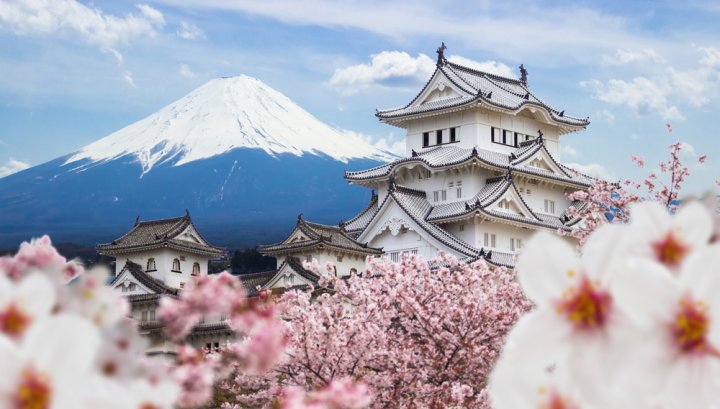
All of us have heard about the “Land of the Rising Sun”, Japan; which is an Island Country in the eastern part of Asia and is located alongside the Pacific Ocean. The world’s fourth-largest island country Japan has about 6,852 Islands encircling its perimeter. The five main islands which constitute 97% of the total land area of Japan are Hokkaido, Kyushu, Honshu, Shikoku and Okinawa.
However, Japan is facing a major challenge as a major part of its population is of old age, courtesy one of the highest life expectancy and lowest infant mortality rates across the globe. Japanese Yen is the currency and currently is hovering close to 0.009 USD; hence Japan makes for a very economic journey and shopping destination.
Best Time to Visit Japan

Japan is spread in length and covers a large share of land, with the Sea of Japan along the west coast and the Pacific Ocean along the east coast. Mountainous terrain and dense forests cover almost 70 percent of Japan. The country has mainly four kinds of weather i.e. Winter, Summer, Autumn and Spring; however, different parts of the country may have different temperatures and hence it’s imperative to research well about the weather of the particular city/place before planning your visit.
Some Do's and Don'ts to Follow in Japan

Japan may have a very different culture than the country where you are currently staying and being a first-time visitor it’s essential to know about few social and cultural norms which are a part of the country’s culture.
Starting With Some Dos:
- Do use “san” after any adult name
- Do lift bowls of rice, noodles or small plates off the table to easily eat with chopsticks
- Do greet people with a bow posture
- If someone bows in front of you; then greet back with a bow.
- Do fill the glasses of everyone accompanying you while drinking.
- Always wait to be asked where to sit for meetings or meals.
Moving on to a Few Don’ts:
- Don’t tip, open taxi doors (drivers open them with automatic button) or close them
- Don’t lift off the large plates to eat out of them
- Don’t burp at the dining table as it is considered rude in Japan
- Don’t forget to wear slippers after taking out your shoes at the entrance of house while you are visiting someone
- Don’t drink until everyone raises the toast in a get together or party
The Food and Culture of Japan
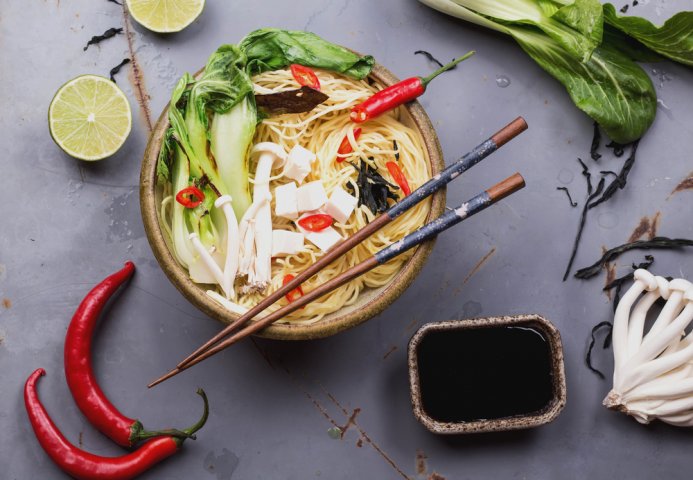
Steamed rice, Noodles; udon (made from wheat flour) and suba (made from buckwheat), Noodles – Ramen, Seafood and Meat and Soy products are part of the typical Japanese meal. So, if you’re a vegetarian or allergic to particular foods, do clear your doubts before trying a new dish.
Shintoism and Buddhism are the main religions of Japan, but Christian and Islamic minorities are also part of society. However, more than 70% of Japanese people don't consider themselves to be believers of any particular religion.
Things to Buy in Japan

Japanese culture is considered to be 1000 BC old and along with a rich culture, this land has developed its own little world full of beauty and various arts. Though there can be countless items to be considered worth purchasing from Japan, but we have selected a few of them which are worth your time and money.
Japanese Cosmetics Products & Accessories
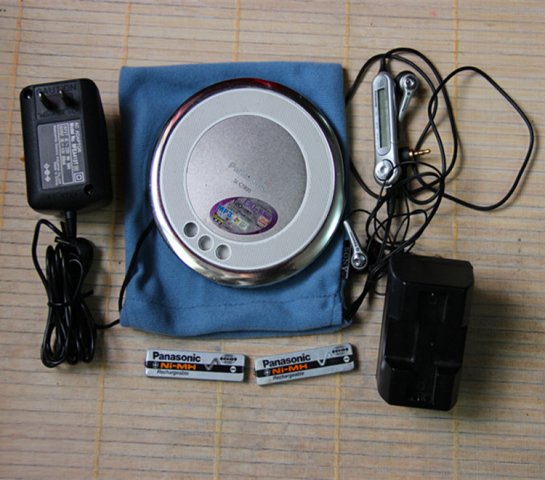
This company was founded in 1999 and is well known for it is chemical-free; cruelty-free and natural products made from food-based ingredients and locally harvested materials such as Washi paper, Konnyaku, silk, rice bran, black sugar, soybeans and gold leaves. These ingredients are mixed together to make world-class beauty recipes that have been passed down by women over generations. Mixed with modern science, their products are now clinically tested and hence are safe for all types of skin types.
Makanai Cosmetics

Vivid green and super trendy matcha tea — the finely ground powder form of specially grown and processed green tea — is one of the world's best natural sources of powerful antioxidants. With ancient roots in Eastern medicine, many modern health experts swear by its metabolism-enhancing, immunity-boosting, and even stress-reducing capabilities.
Shu Uemura Cosmetics
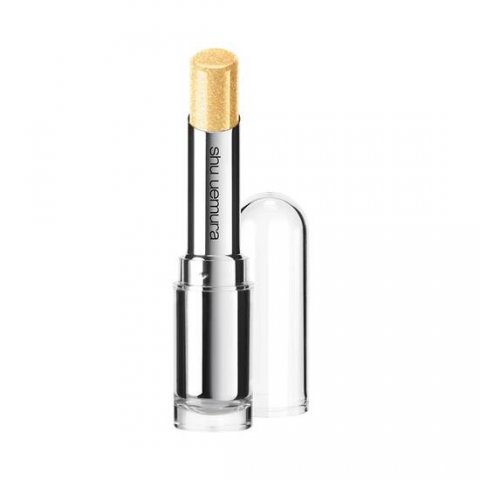
Named on a Japanese Make-up artist, the Shu Uemura range of cosmetic products was launched in 1960 and the first product was a cleansing oil, which cleared the skin better than a bar of soap and also doubled up as a moisturizer. The cleansing oil is still one of their bestsellers apart from a wide range of products ranging from lipsticks; sweatproof pencils, natural mascara and an entire range of products for face, eyes and lips. Also, over the years they have expanded their gamut to perfumes, hair and lifestyle products and handmade makeup brushes.
Hair Accessories and Jewellery

Beautiful hairpins with flowery designs and colourful hair accessories are what you can expect in markets of Japan. You can find plenty of them in the local markets or the 100 Yen shops at quite reasonable rates.
Few Unique Designs Include:
- Kimono Clips
- Kimono Fabric Headbands
- Origami Beaded Hair Pins
- Two Leg Kanzashi Hair Stick
- Organic Cotton Headbands
- Kanzashi Flower Hair Clip
- Embellished Japanese Hair Sticks
Edo Tsumami Kanzashi
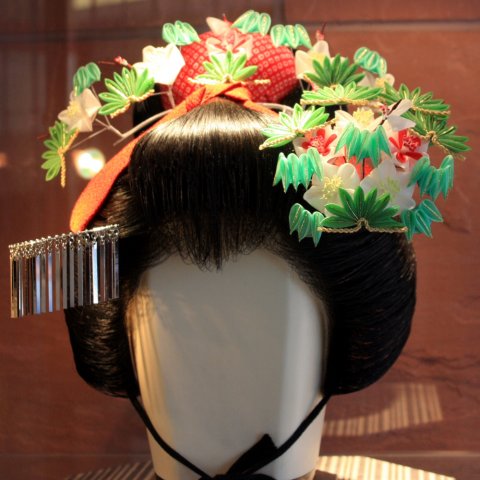
Traditional Japanese Hair accessories which are made from thin pieces of silk weaved in the form of flowers or birds are known as Edo Tsumami Kanzashi. These are very durable and lasts long, hence making for a nice gift item.
These hair ornaments are quite famous in Japan and surprisingly, few of them have been modified for self-defence. Few other varieties of Kanzashi are made from gold, silver, plastic, lacquered wood and even tortoise shell. The basic Kanzashi shapes include Bira-Bira, Kogai, Tama and Kushi to name a few.
Japanese Apparels

Japanese apparels have their own unique style and can be easily identified in a group. Japanese wear comprises of basically two types of clothing: the traditional Japanese clothing such as Kimonos and the western wear.
Hybrid Japanese Fashion

Over the years, Japan has developed its fashion taste and behaviour and has mixed and matched western and other clothing with traditional Japanese clothing. Few popular examples are hoodie with kimono sleeves, bushido pants, haori (hip-length kimono) over jeans and a t-shirt etc.
Japanese fashion designers are constantly experimenting and creating new designs inspired or fused with American, British or even Indian Fashion. Similarly, fashion gurus of different continents are trying to interweave elements of Japanese fashion into western garments and thus creating a lot of options for trendy people.
Economic Clothing

There are various well-known brands like H&M, GAP and Forever 21 which are comparatively cheaper in Japan than in other Asian countries. Uniqlo and GU are other famous brands in Japan where you will find inexpensive and trendy clothing.
If you are good at grabbing some good stuff out of a pile, then do enquire about the local flee market nearby your stay. Also, Harajuku (second-hand clothes), Shibuya, Bingo, Don Don Down on Wednesday, Shinjuku, Takadanobaba, Shimamura, Nippori and Koenji are few other places where you can do cheap shopping.
Japanese Textiles and Handmade Products
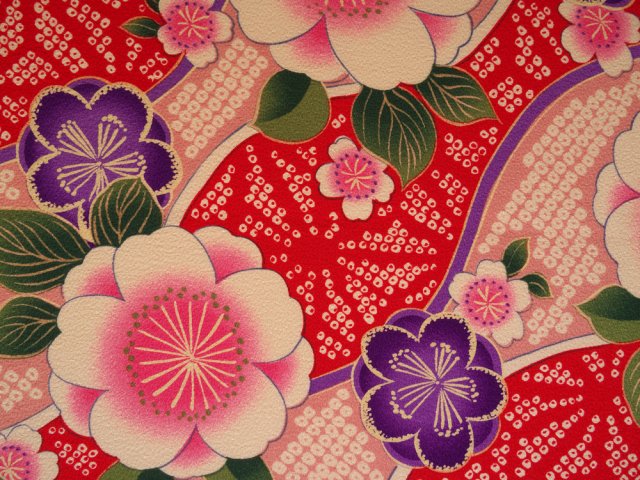
We have picked few beautiful handlooms and handmade products of Japan which would make for a great gift or souvenir.
Furoshiki Fabrics

Generally square in shape, Furoshiki fabrics are multipurpose clothes and can be used to prepare makeshift handbags, pack bento (kind of traditional Japanese food) and gift wrapping. Modern furoshiki fabrics can be made of cotton, rayon, nylon, silk or chirimen and is often designed with shibori and other traditional Japanese designs. The size of Furoshiki fabric can vary from a handkerchief to larger than a bed sheet cloth.
Handmade Japanese ceramics
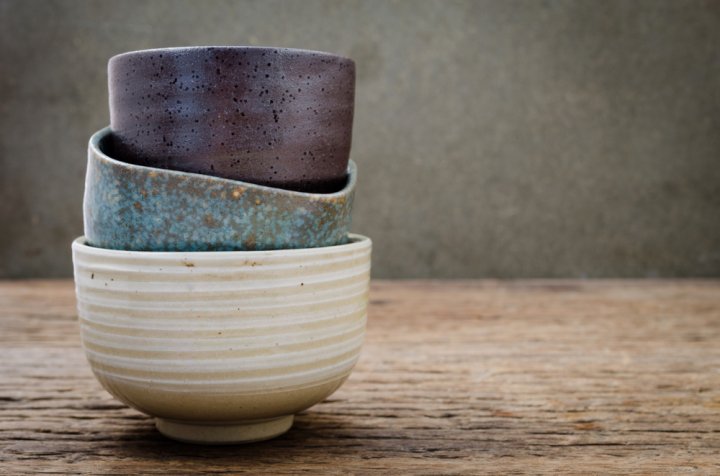
Japan is famous for its ceramic products and has a fan following across the globe. You can get handmade Japanese ceramics at malls, specialty store, though few cheaper options are also available in the flea markets. There are varieties of options available such as dishes, chopstick rests, Teacups, shallow dishes for pickles and sauce etc. Do think about the “transportation without breaking” factor, while purchasing that favorite pick of yours.
Kami and Washi Paper
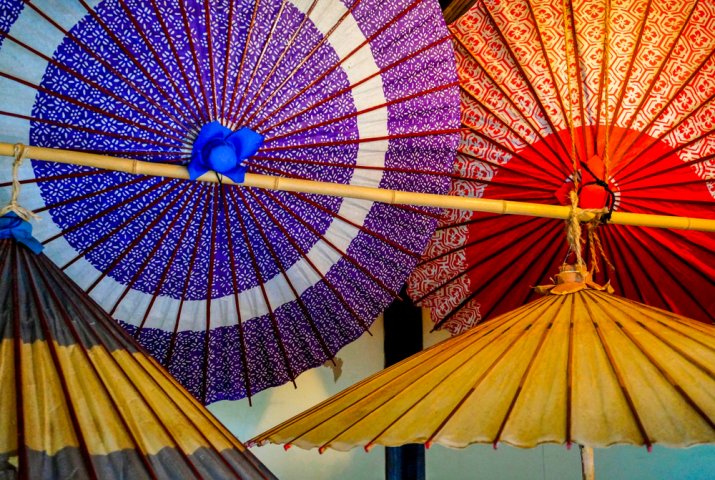
Kami is the simple word for paper in Japanese language and Kami or Koiy paper is the most inexpensive paper prepared specifically for origami. This paper is plain on one side and printed on another side with a solid color and is thin and easy to fold, thus making it easier to mold into beautiful designs or animals.
Similarly washi has been derived from ‘wa’ meaning Japanese and ‘shi’ meaning paper and is a term used for handmade traditional paper prepared from fibre derived from different trees and plants etc. It is also used in traditional arts like origami and shodo.
Aizome Textiles
Aizome means ‘Indigo dye’ and this is a colour which is woven in Japan’s culture and tradition so much so that a shade of this color is evident in almost every sphere of life in Japan. Though modern fabrics are machine dyed, but this ancient art of Aizome dying is still alive at a few places in Japan and with a little search, you will be able to find out a lot of items including garments to interior décor to accessories; all dyed through this natural and environment friendly process. The dye is prepared by fermenting indigo leaves twice through a traditional process.
Sensu (Folding Fans)

Japan can’t be imagined without those beautiful handheld fans; they are called Sensu in Japan and are a part of Japanese culture since sixth century CE. Initial fans were rigid, but later on folding fans were invented and since then they have become an inseparable part of Japanese culture. Japanese fans are made of bamboo and paper with beautiful drawings on them and make for a beautiful gift and a souvenir of your visit.
Small Souvenirs
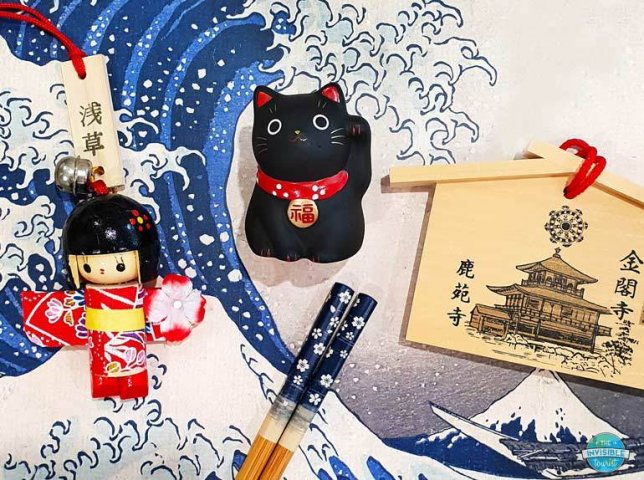
Few items handpicked by us which will not burn a hole in your pocket, neither will take a lot of space in your suitcase. These are not only representations of Japanese culture, but will constantly remind you of your cultural trip to the Land of Rising Sun.
Japanese Dolls
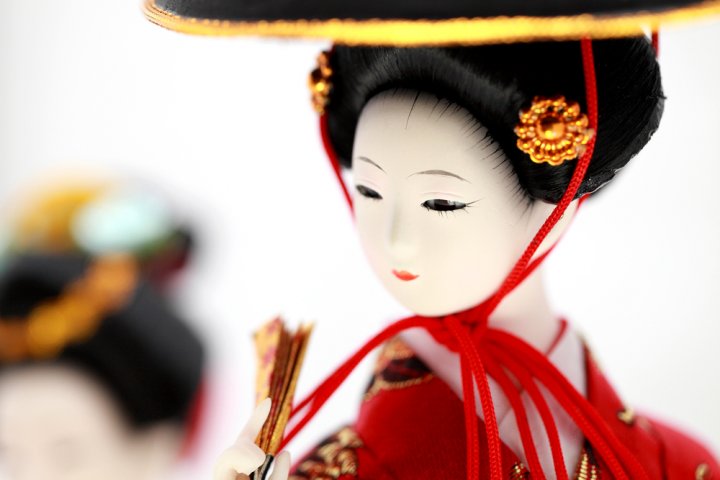
You’ll notice Japanese Dolls at different places in Japan, be it shrines, temples or stores as they have their own place and importance in Japan’s cultural heritage. Dolls of emperors, gods to farmers and beautiful girly dolls, you can pick one of them as a memoir of your Japan trip.
Omamori Charms
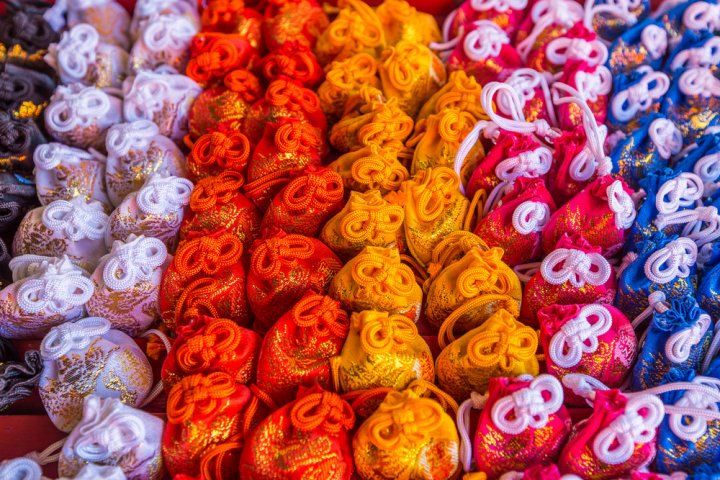
Omamori Charms can be easily found at the temples and shrines and are traditional Japanese charms available in various styles and designs. Each Omamori is believed to be associated with some special purpose; it can be a success in exams, good health or good fortune in a job, business or love.
Gamaguchi
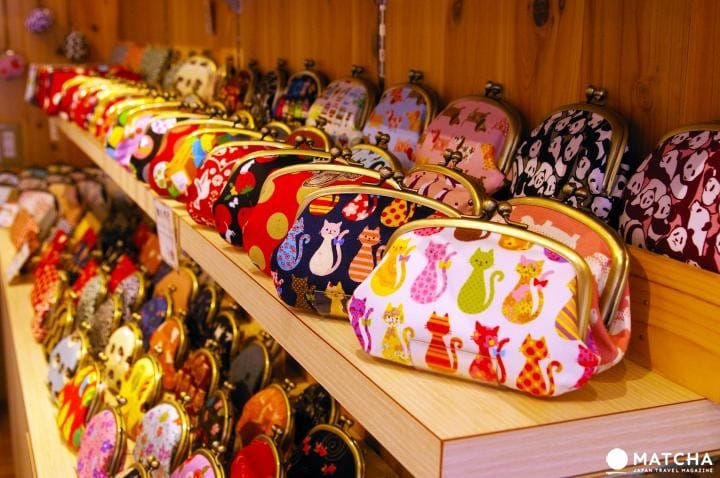
Gamaguchi is a special purse, which is clasped and is believed to resemble a toad’s mouth. These pouches are beautifully decorated with floral patterns and are quite popular among the youth. Gamaguchi’s are available in many designs and due to its small size and price, it makes for a nice souvenir item.
Food and Beverage Items
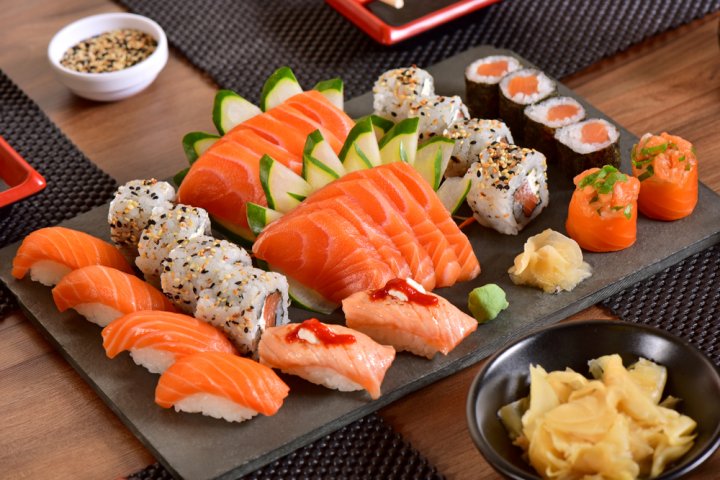
Japan has its own unique flavours of sweets and snacks and you will be spoilt for choice when you step inside a departmental store. Red bean and fruit rice cakes are delicious and worth tasting once, similarly, Matcha (Green Tea) is also one of the famous beverages of this country.
Electronic Items

Japan is renowned for its cutting edge technology and is among the world leaders for quality electronic items. You can shop for headphones, cameras, gadgets and phones etc. Look for tax free shopping at the famous malls and duty free shops at the airports.
-
 If You are Planning a Trip to Pondicherry in 2020, These are the Places to Visit for Foodies, Beach Bums and Shopaholics!
If You are Planning a Trip to Pondicherry in 2020, These are the Places to Visit for Foodies, Beach Bums and Shopaholics!
-
 Wondering Where to Go Shopping on Your Next Trip to Hyderabad? Visit Begum Bazaar – The City's Biggest Commercial Market and a Shopper's Paradise (2020)
Wondering Where to Go Shopping on Your Next Trip to Hyderabad? Visit Begum Bazaar – The City's Biggest Commercial Market and a Shopper's Paradise (2020)
-
 क्या आप पता लगाने चाहते है की दुबई में अपना पैसा कहां खर्च करना है? दुबई में क्या खरीदना है, इसके बारे में जानने के लिए नीचे स्क्रॉल करें।
क्या आप पता लगाने चाहते है की दुबई में अपना पैसा कहां खर्च करना है? दुबई में क्या खरीदना है, इसके बारे में जानने के लिए नीचे स्क्रॉल करें।
-
 दुबई में शॉपिंग करने को बहुत कुछ है, परन्तु क्या खरीदें और क्या नहीं वह भी बिना जेब खाली किये: आइये देखिये दुबई में १० खरीदने लायक सामान, अपने लिए और भेंट करने (२०१९)
दुबई में शॉपिंग करने को बहुत कुछ है, परन्तु क्या खरीदें और क्या नहीं वह भी बिना जेब खाली किये: आइये देखिये दुबई में १० खरीदने लायक सामान, अपने लिए और भेंट करने (२०१९)
-
 Planning to Visit Singapore for the First Time? Your Guide for What to Buy from Singapore and Where to Buy it From! (2019)
Planning to Visit Singapore for the First Time? Your Guide for What to Buy from Singapore and Where to Buy it From! (2019)
Don't Forget To Explore Tsukiji Market
This is the largest fish market in the whole of Japan and also in the whole world! So make sure you do visit it to just observe the scale at which business is being carried out there. Also, feel free to explore the local street markets as well and we promise you that you would not be disappointed.


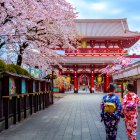







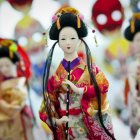
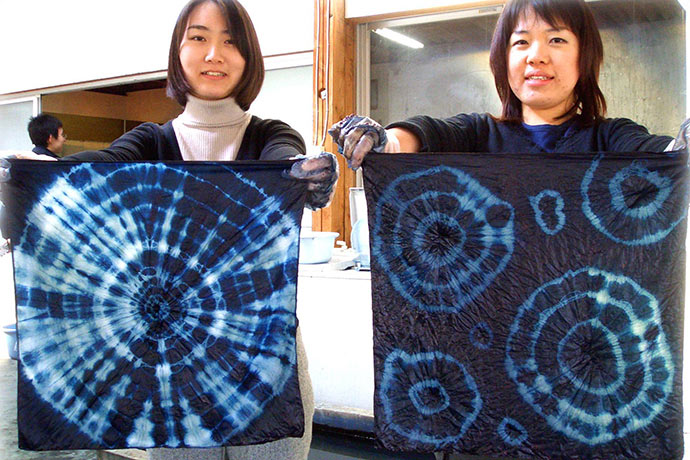



 Highlight the Best Facets of Your Incomparable Beauty: Discover the Best Face Highlighter Currently Available in India and Everything You Need to Know About Using Face Highlighters for Maximum Effect (2023)
Highlight the Best Facets of Your Incomparable Beauty: Discover the Best Face Highlighter Currently Available in India and Everything You Need to Know About Using Face Highlighters for Maximum Effect (2023)
 Forget the Blemishes and Get that Picture Perfect Flawless Radiance on Your Face: Check out the Best Foundations for Oily Skin Currently Available in India and Everything You Need to Know About Makeup Foundations (2023)
Forget the Blemishes and Get that Picture Perfect Flawless Radiance on Your Face: Check out the Best Foundations for Oily Skin Currently Available in India and Everything You Need to Know About Makeup Foundations (2023)
 Make Your Presence Felt Wherever You Go: Discover the Best Perfumes Under 2000 for Both Men and Women to Announce Your Arrival and Make Any Occasion Memorable (2023)
Make Your Presence Felt Wherever You Go: Discover the Best Perfumes Under 2000 for Both Men and Women to Announce Your Arrival and Make Any Occasion Memorable (2023)
 Protect Your Oily Skin from the Harmful Rays of the Sun: Discover the Best Gel Based Sunscreens for Oily Skin and Everything You Need to Know Before Buying One (2023)
Protect Your Oily Skin from the Harmful Rays of the Sun: Discover the Best Gel Based Sunscreens for Oily Skin and Everything You Need to Know Before Buying One (2023)
 Minor Blemishes and Wrinkles Affecting Your Confidence? Check out the Best BB Creams to Conceal Your Worries and Nourish Your Skin to Restore the Healthy, Radiant and Glowing Complexion Back Again (2023)
Minor Blemishes and Wrinkles Affecting Your Confidence? Check out the Best BB Creams to Conceal Your Worries and Nourish Your Skin to Restore the Healthy, Radiant and Glowing Complexion Back Again (2023)
